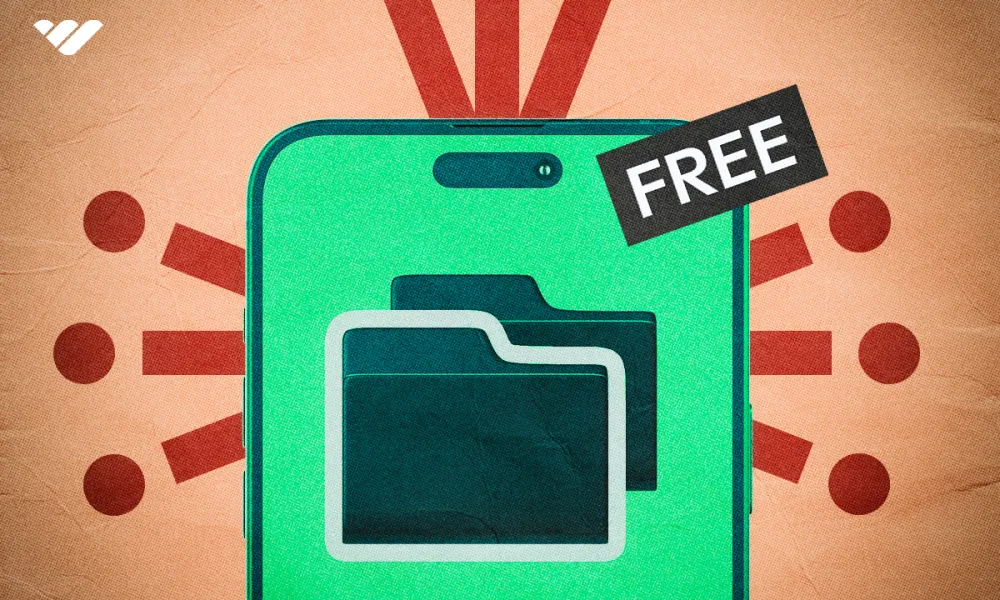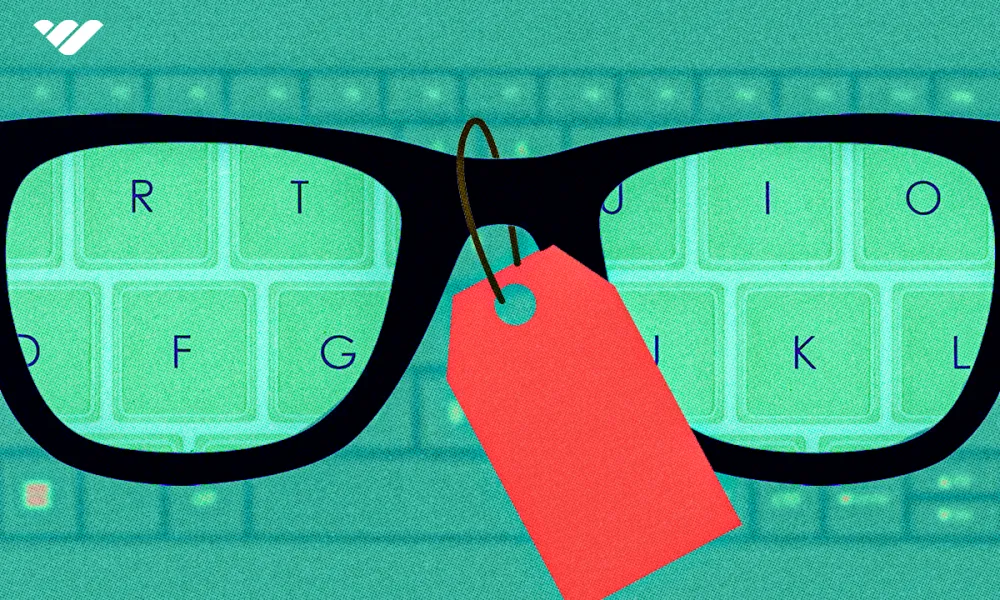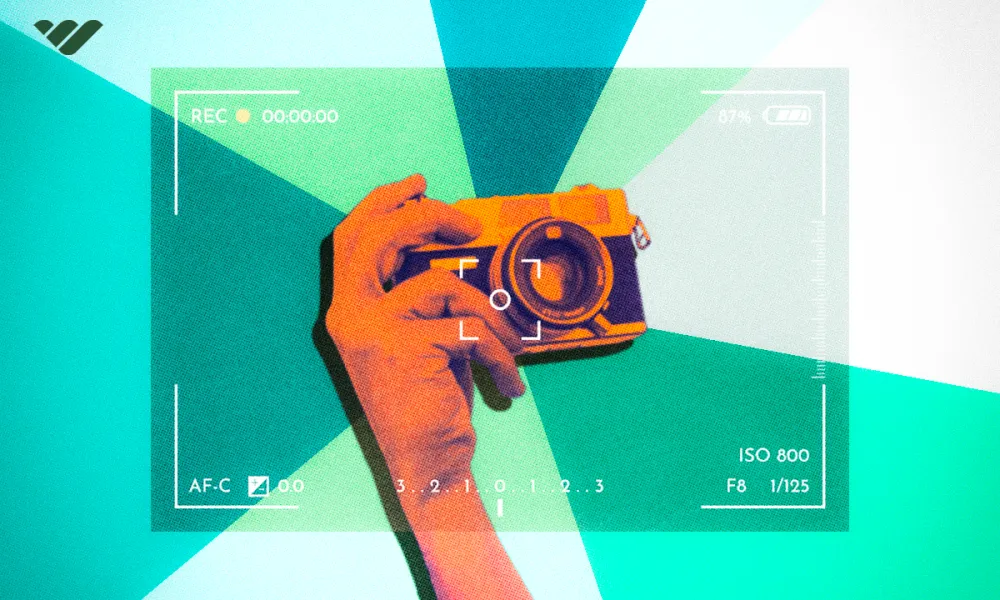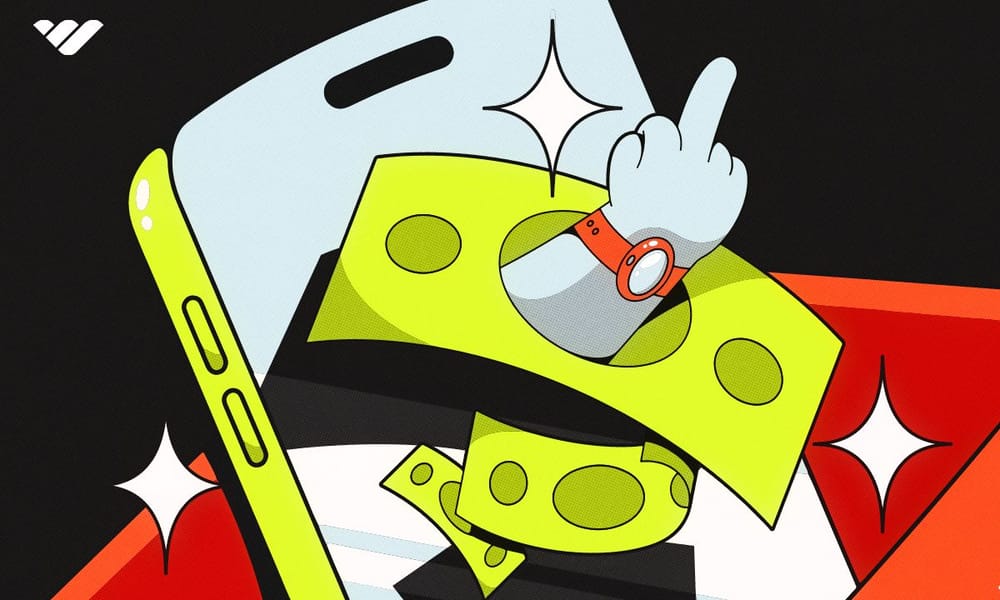Learn how to make printables to sell through platforms like Etsy, social media, and digital marketplaces – from choosing a niche to designing your products.
Printables are one of the hottest digital product niches thanks to their low overheads and high profit margins.
Once you’ve created a printable asset, you can basically sell an infinite number with zero extra effort on your part. That makes printables an ideal passive income stream.
But, like with any digital product, you need to make printables before you can start selling them. Read on for a step-by-step guide on making printables to sell.
What are printables?
Printables, also known as digital downloads, are designed items sold online – often featuring personalized elements. As the name indicates, they’re usually intended to be printed. However, they’re not always turned into physical products; they can also be used as digital designs.
Examples of digital printables include:
- Stickers
- Wall art
- Planners
- Stationery
For example, Whop creator Jeana Albert sells printable journals that customers can download and print:

(FYI, I’ll share lots more examples later in this article.)
The appeal of printable products is that once they’re designed, they can be sold at scale for as long as you like. They don’t cost the earth to create, and customers can print them again and again. So it’s a good deal for you and your customers.
You can sell printables in a variety of formats, including:
- PDF: Best for printing; can’t be edited.
- PNG: Best for preserving high-resolution images.
- JPG: Best for photographs.
There are endless ways you could turn printables into profit. As long as you have an idea for a product (and a plan to promote it), the sky’s the limit.
How much money can you make selling printables?
The money you can make selling printables widely varies. Some product types have a bigger market than others, while some designs will be more popular. As with anything, the amount of time and effort you put into getting your printables business off the ground will also be a key factor in your earning potential.
Out there in the real world, there are creators earning thousands of dollars a month selling printables…
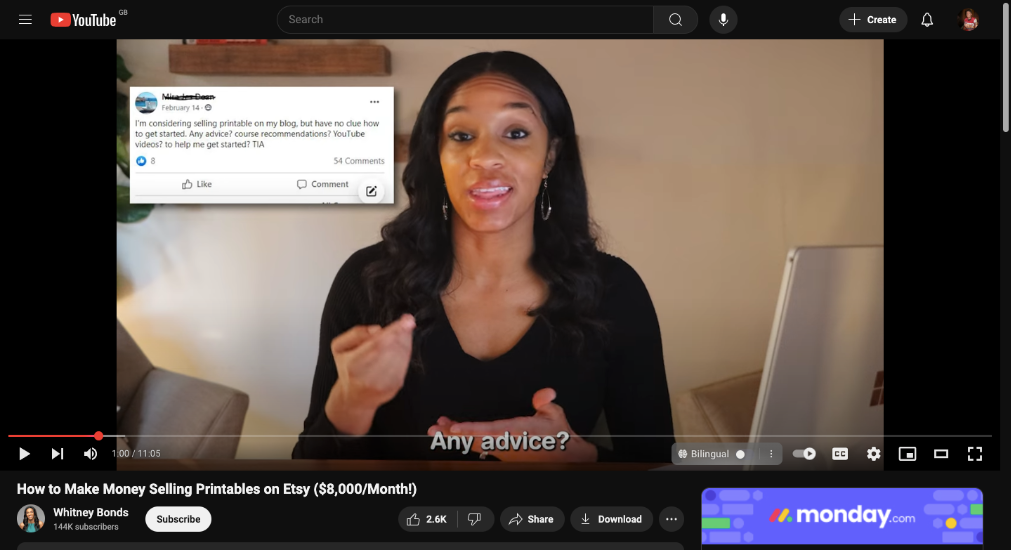
…and also people who are just getting started and are barely scraping by:
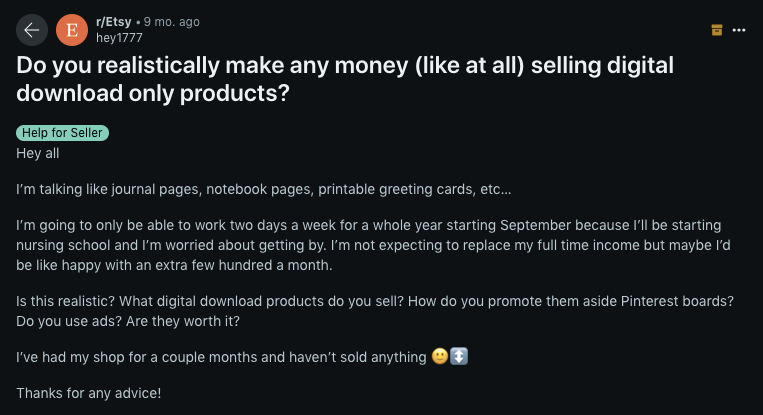
In reality, nobody becomes an overnight millionaire selling digital printables. If anyone tells you otherwise, they’re lying. However, if you know what you’re doing, there’s plenty of scope to make good money - just check out this article on how much you can really make selling digital products.
With that in mind, let’s explore the specific steps required to create your first printable product:
How to make printables to sell in 8 simple steps
1. Choose a niche for your printables business
The first challenge is to figure out your niche or market segment.
Honing in on a niche means you can be specific, rather than trying to appeal to everyone, everywhere.
This means you’re competing with fewer rivals, making it easier to build a brand and win your first customers. Plus you can increase your conversion and retention rates by making printable products that are useful and/or attractive to consumers in your target niche.
Here are some examples to consider:
| Generic printable idea | "Niched-down" printable idea |
|---|---|
| Event invitations | Baby shower invitations |
| Meal planners | Vegan meal planners |
| Wall planners | Wall planners for freelancers |
So how do you choose a niche?
Start by getting inspiration from your own interests, skills, and knowledge. Then conduct market research to find out about upcoming trends or products that have historically sold consistently well.
Let’s take a more in-depth look at the research process…
Use Google Trends
Use Google Trends to identify related queries for the term “printables”, which can help you find potential niche ideas. For instance, if you search the top related queries globally over the past five years….

…you’ll find related terms like:
- Coloring printables
- Kids printables
- Printable coloring pages
- Christmas printables
- Halloween printables
Any of which could be a good fit for your business.
You can also identify sub-categories by entering those related terms into Google Trends to identify other related keywords searched by the same people, helping you further hone in on your niche. For example, entering “coloring printables” brings up terms like:
- Mermaid
- Dinosaur
- Hello Kitty
- Easter
Check out the competition on Google Shopping
It’s useful to know what real-world printable businesses exist and what they’re selling. To see the products and sellers already out there, search for “printables” in Google, then browse the Shopping listings.
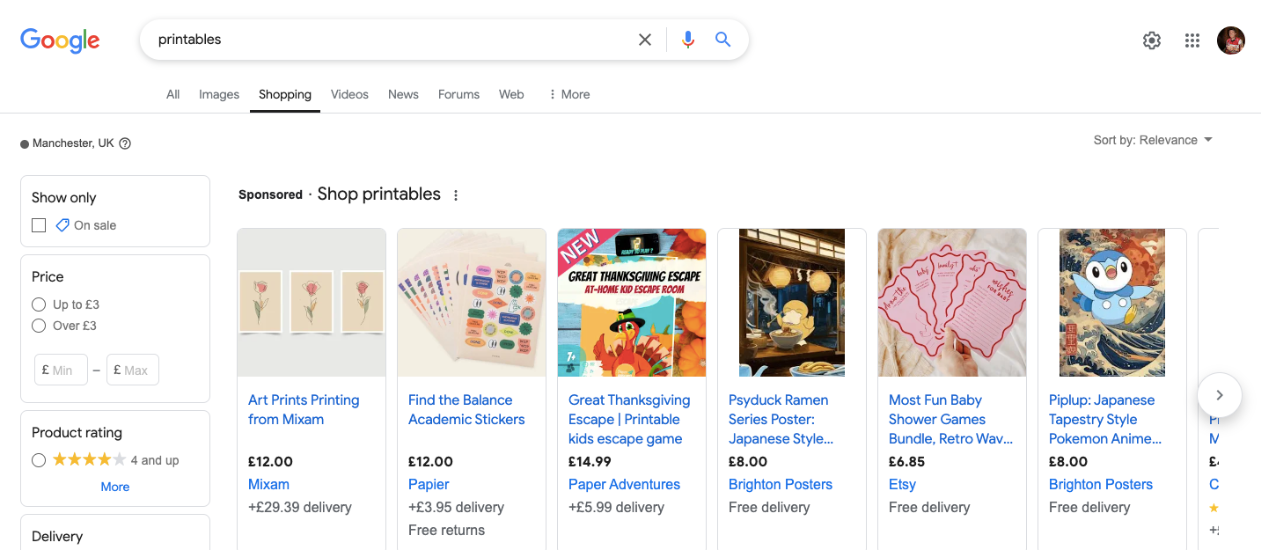
Browse the results and pick out common themes. For example, a quick search suggests that lots of people are selling:
- Printable pages for journals and organizers
- Printable games for kids
- Printable stationery sets
This method can also help you gauge the price range of your printable products. Given the minimal overheads, you can pretty much charge whatever you want for printables and still make money. But you’ll want to strike the right balance between high sales and strong profit margins.
Browse marketplaces for printable products
Another smart way to identify a niche for your printables business is to look at marketplaces such as:
For instance, here’s a look at some of the merchants selling printables through Whop:

As with the other methods, take the time to browse the results and pick out any that catch your eye.
Once you’ve finished the research phase, pick a niche, then move on to the next step.
Further reading: Best digital product niches: Finding the most profitable ideas to kickstart your next online venture
2. Work on your branding
Once you’ve figured out what niche you’re targeting, it’s time to consider your brand and image.
In order to make your printables stand out and tie them to your business, you’re going to want to incorporate your brand colors and logo into the design. The stronger your brand, the more likely people are to keep buying from you – and it’s a whole lot cheaper to retain customers than win new ones.
You want to create three main things at this stage:
- Your business name
- Your logo
- Your color palette
Unless you’re already totally sold on a specific name for your printables business, try asking ChatGPT (or a similar tool) to come up with ideas:
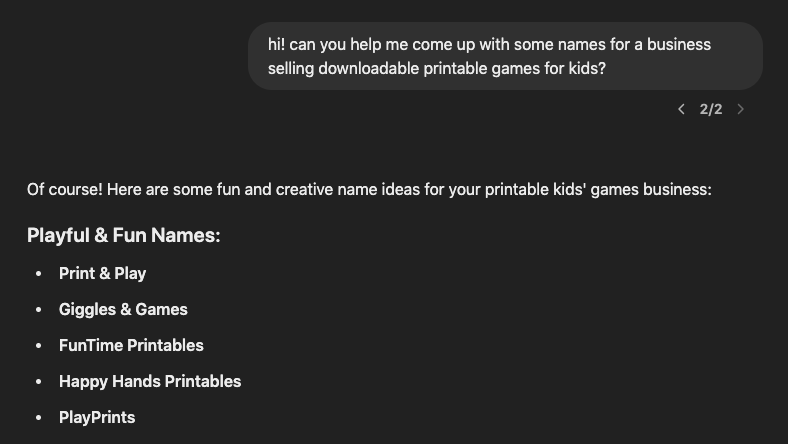
The more information you share about your business, niche, and audience, the more targeted the suggestions will be:
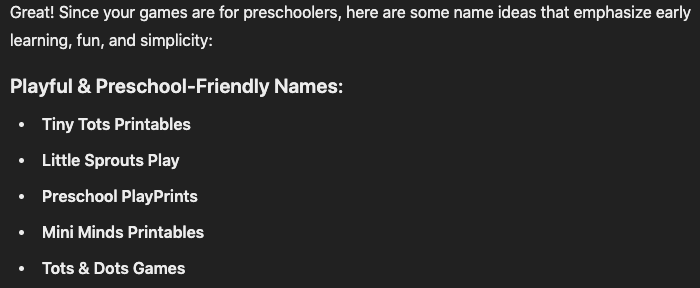
Browse the results until you find a name you like (or, alternatively, use the ideas to come up with your own). Don’t forget to Google your chosen idea to make sure no one else got there first!
Next, use a free logo maker to design a logo based on your business name, niche, and favored branding style. There are plenty of options. For instance, with Shopify’s built-in logo maker, you simply enter your name…
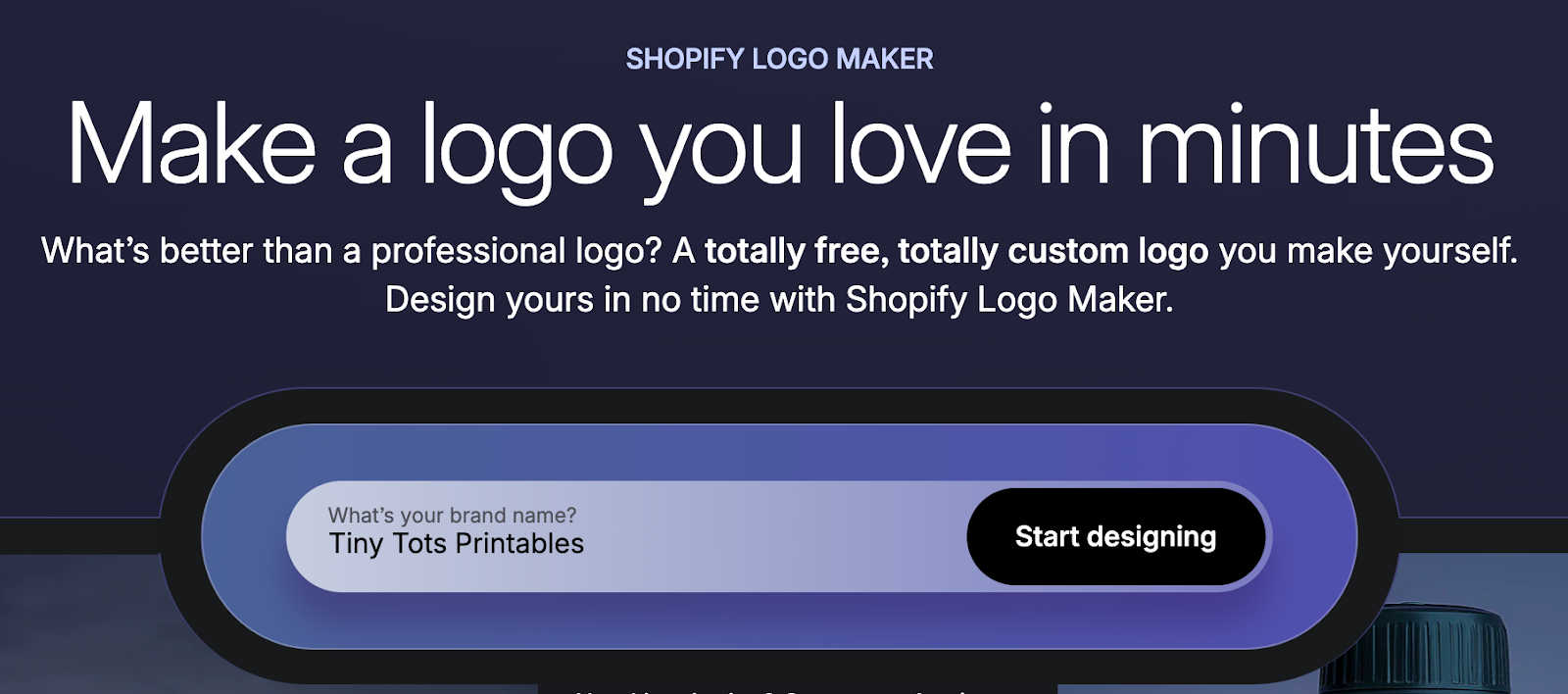
…choose your industry (or the closest possible match)...

…then take your pick from the automatically generated designs:
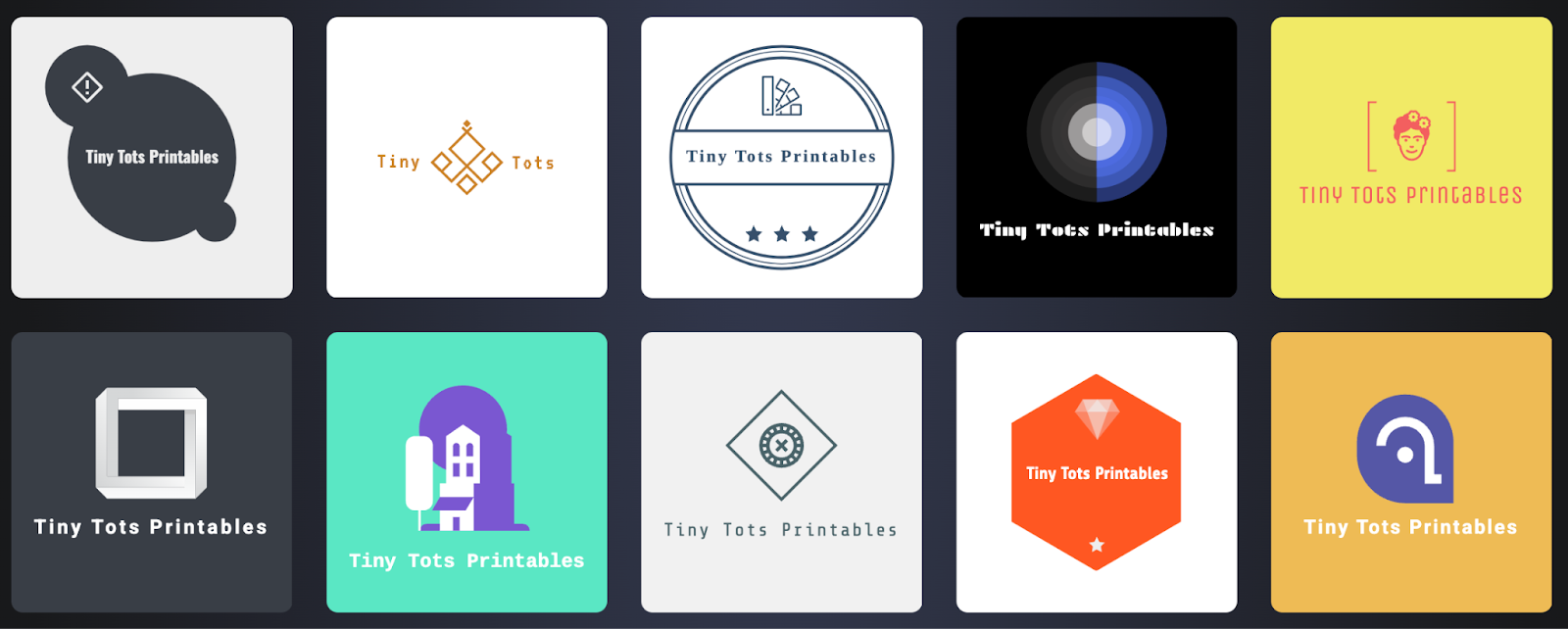
Finally, use a tool like Colors to choose your brand’s color palette.
All you have to do is hit the spacebar to generate new palettes, then note the color codes for your favorite combination:
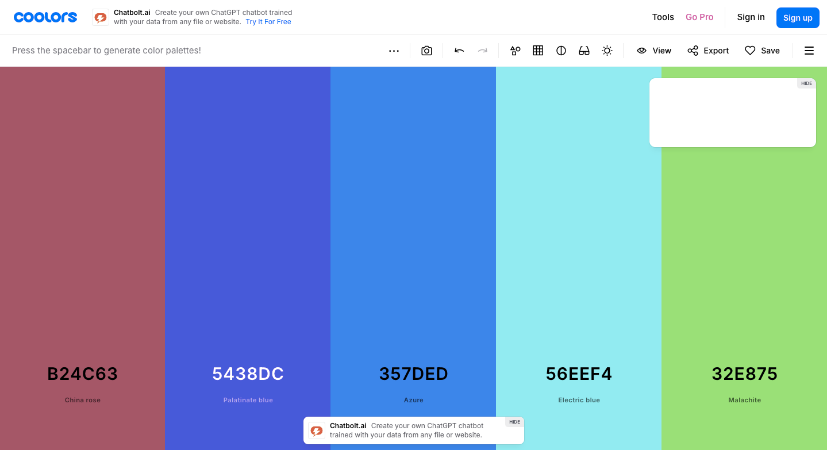
Then simply add your chosen color combo to your free business logo and you’re good to go.
3. List up to 10 ideas for printable products
Your next task is to come up with some ideas for printable products to sell.
Your best bet is to keep things simple at the start. Don’t overfill your store with 50+ printables from the get-go. Not only will you have to spend way more time making printables, but you also risk scaring off potential customers. Indeed, research from Emarsys found that:
- 10% of US consumers have ditched a planned purchase after being presented with too many options
- 17% of respondents report feeling overwhelmed by choice
In any case, if your products are going to be worth buying, you’ll need to spend some serious time on the design phase. Chances are, if you can knock them up in a couple of minutes, other people will be able to do the same. And if they could just do it themselves, why would they buy from you?
So it pays to put in the hours at the start, focusing on quality over quantity and making something unique and valuable.
Struggling for inspiration? Here are some ideas for printables you can sell…
Calendars and planners
Calendars and planners are popular with people who want a helping hand with their life admin. You can choose from a range of different planner types to sell, such as:
- All-in-one planners incorporating multiple overviews of years, months and weeks in a single product
- Monthly and weekly calendars for people who just want to mark off key dates without more detailed planning
- Wedding planners to help plan out important events and activities in the run-up to the big day
Checklists
Checklists are invaluable for day-to-day organization. There are various ways to create custom checklists, such as designing them for specific audiences – like parents or business owners – or theming them around specific activities (like planning a vacation, cleaning, or grocery shopping). They can also be an upsell add-on to an all-in-one planner.
For kids
Children’s printables are a huge market, which you can narrow down into a tighter niche.
Consider products that kids might enjoy, such as:
- Coloring pages
- Connect-the-dot games
- Educational language flashcards
- Activity books
You can have a lot of fun coming up with appealing printables for kids. Get playful and creative, using your imagination and lots of bright colours.
Finances and budgets
Help people get their financial health in order with money-related printables. There’s a huge market for products that help people take control of budgets, income tracking, debts, and savings goals.
You could consider savings trackers, budget planners, debt payment trackers, or general wealth planners. For those who like to organize all areas of their finances at once, combine these into a single product.
Task planning
Looking after household responsibilities can take a lot of planning. Whether for families, people with busy lives or anyone who needs help staying organized, task-planning printables can be an invaluable help.
These products might include:
- Chore charts
- Meal planners
- Home management planners
They could also appeal to specific types of people. For example, ADHD planners are becoming increasingly popular:
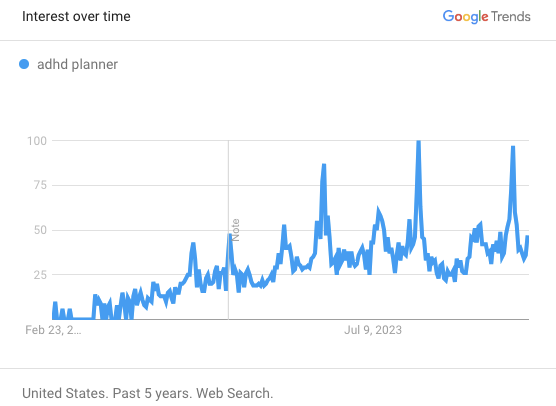
Health and self-care
Health and self-care planners help your customers keep wellness in check, stay motivated, get inspired with new ideas, track their goals, and more. Ideas include:
- Self-care checklists with activity suggestions for each day
- Affirmation cards with a selection of inspirational phrases
- Gratitude pages to support mindfulness and encourage daily writing
- Negative thought trackers to take control of mental health
Art and decor
For customers looking to change up their home, art and decor printables are always popular. You can create products in specific themes, such as:
- Animals
- Florals
- Abstract designs
Art and decor printables also make great gifts. You could maximize this potential with wedding or baby-themed printables.
Parties and holidays
Want to help get the party started? Start selling party and holiday-themed printables, such as:
- Party invitations
- Gift tags
- Greeting cards
- Party games
- Photo booth props
Whether you design printables for birthdays, weddings, or kids’ parties, these organizational helpers will make any celebrations smooth sailing.
4. Design your printables
You’ve done your research – now it’s time to bring your ideas to life.
Keep in mind how your printable products will look “IRL” once your customer has printed them out. The most common paper size is 8.5 inches x 11 inches, or around A4. So, whatever printables you’re selling, it makes sense to plan around this sizing (for instance, planner pages are often around half this size).
Also, don’t forget the reason people will be using your product. Some printables will be hole-punched and kept in binders, while others may be framed. So keep your design within the relevant margins.
There are various methods you can use for creating your own printables. Let’s take a look at your options and the products they’re best suited to:
| Tool type | Examples | Best for making… |
|---|---|---|
| Word processors | Google Docs Microsoft Word LibreOffice Writer | Monograms, labels, and banners |
| Spreadsheet software | Google Sheets Microsoft Excel LibreOffice Calc | Calendars, planners, and checklists |
| Cutting machine software | Easy Cut Studio The SignCut Suite EasyCut Pro | Stickers and die-cut printables |
| Graphic design apps | Canva, Adobe Express, Procreate | Prints, stickers, and coloring pages |
| Desktop design software | Adobe Illustrator, Photopea, Inkscape | Complicated designs and intricate design formatting |
Designing printables with a word processor
It makes sense to use a software program like Microsoft Word or Google Docs for printables with a lot of text and minimal visuals, like labels and banners. You can convert them to PDF once you’ve designed them.
Using spreadsheet software
Make use of spreadsheet software like Google Sheets or Microsoft Excel for designing any printables with rows and columns, like calendars and planners.
Using cutting machine software
Cutting machine software will make it easier for customers to print out certain products at home. Programs include The SignCut Suite and Silhouette Studio. You can usually either design within the software or import custom ideas. These are best for printables like stickers and die-cut products.
Making printables with Canva
Canva is a pretty comprehensive graphic design tool for a wide range of projects and products. You can make printable designs highly appealing, even with little design experience. There are even templates for various products, such as planners, posters, and checklists.
You can use Canva to precisely place text and images within your design. If you purchase a Canva Pro subscription, you can access a huge bank of high-quality images, stock photos, graphics, fonts, and backgrounds.
Check out this guide to creating with Canva.
Using desktop design software
If you want an advanced tool for even more control over your designs, design software like Adobe Illustrator is where it’s at. Vector-based software supports intricate designs with sharp graphics, which you can refine with expert tools. It’s a good idea to export these professional designs using the PDF file format so they’ll retain their quality and can’t be edited.
5. Test-print your designs
It can’t be said enough; at the final stage of creation, don’t forget to see how your designs look in their physical form. Test and test again to see how they turn out.
Examine how the design looks on the page and how the product fits its purpose. For example, cut stickers out from the backing sheet, frame wall art, or hole-punch planners.
The goal here is to iron out any potential product problems before you start selling printables to paying customers.
6. Price your products
Now to add the price tag.
Before you list your product for sale, make sure you’ve checked how much similar items are currently selling for.
You might want to price printables specifically for the platform you’re selling them on. For example, wall art may sell for more on Etsy than it would on Amazon. So take a look at what the competition is charging and define your ecommerce pricing strategy accordingly.
One method is to start by undercutting your rivals in order to build your customer base. Just don’t sell yourself short – charging too low a price could put people off.
Test as you go along, adjusting your pricing as you see fit. As you grow your business and get more ratings and reviews, you can feel more confident about increasing your product price.
7. Choose your sales channel(s)
With so many sales channels to choose from, you’ll need to pick the right place(s) to list your product. Here are your best options:
Create your own website
Creating a website gives you full control over your brand, from the functionality of your sales platform to the way you promote your products. You can choose a domain name and build a site that aligns with your branding.
However, you’ll need some level of marketing and technical knowledge to do it well. And you’ll also have to cover upfront costs like buying a domain name and paying for hosting.
Use an ecommerce platform
Ecommerce platforms like Shopify and WooCommerce offer features specifically designed to help you make sales, take payments, and manage customer orders. They also let you create a custom domain and design an attractive storefront based on prebuilt themes and templates.
However, this option isn’t cheap – for instance, Shopify’s prices range from $29 – $299+ per month.
Sell through a generic ecommerce marketplace
If you want to access a significant existing customer base, look to an ecommerce marketplace like Etsy, eBay, or Amazon. You can create your own storefront using your own brand name. These are easy to set up, with little technical knowledge needed, and you can incorporate popular search terms into your listings to reach buyers who are actively looking for products like yours.
The big downside of selling through a generic marketplace is that most customers won’t be searching for the stuff you sell.
Sell through a dedicated marketplace for digital products
If you’re selling printables, why not use a platform that’s specifically geared toward digital products?
Whop is exactly that platform. We support sellers across countless digital product niches, so you’ll find all you need to make money online.
With Whop, you can create your own custom whop to showcase your printables, while leaving the whole process of capturing payments and fulfilling orders to us. And there are no upfront costs, so there’s nothing to stand in your way.
Our Discover page helps you get your products in front of a wider audience.
Why not give it a try? It’s free and quick to sell on Whop, so you can start exploring the benefits with nothing to lose.
Sell on social media
We can’t ignore the vast potential of social media. Platforms like Facebook, Instagram, TikTok, and Pinterest can help you attract potential customers through relevant content. Then you can steer your audience toward an external storefront, or even sell to them directly through social commerce solutions like TikTok Shop.
8. Promote your printables business
There are so many different ways to market printables that getting started can feel overwhelming. So I’ve rounded up a couple tried-and-trusted promotional techniques:
- Collect customer email addresses and send your customers special offers, information on new product launches, and interesting updates about your business or niche.
- Harness SEO to help your business become visible in Google results pages. Find out what keywords are being used in your niche and use them in your listings.
- Reach your customers on social media to promote your printable products, grow a community, and engage with potential customers.
- Offer freebies or discounted products to attract first-timer customers.
- Run an affiliate program to capture customer referrals. With Whop, you can offer people a cut of any sales they generate through your store (typically 10% – 30%), helping you reach a wider audience without spending a ton of time on your own marketing.
Further reading: For more promotional ideas, check out Digital product marketing: Strategies to grow your sales.
Sell more printables with Whop
When it comes to picking a sales channel for your printables, it makes sense to choose one that specializes in digital products.
Whop is the perfect fit.
Whop does all the hard stuff – like listing your products and handling payments – for you, so you can concentrate on the most important thing: creating printables that people want to buy. We help you reach more customers through our built-in referral model, where other creators can earn a commission by promoting your products. And we only take a 2.7% + $0.30 cut of any direct sales you generate.
Getting started is totally free and only takes a couple of minutes, so what are you waiting for?
FAQs
How do you make printables to sell on Etsy?
Making printables to sell on Etsy starts with your design. Create digital products with software programs, such as Adobe Illustrator or Canva. Save your printable design as a PDF to maintain its quality. This also ensures it can’t be edited on downloading. Then your design is ready to be sold on Etsy, with your own listing on your seller page. Make sure to describe your printable clearly to buyers and include keywords and high-quality product imagery.
Further reading: How to sell printables on Etsy: An easy guide to making passive income
How do you make printables to sell with PoD?
Print on demand (PoD) allows you to make printables by uploading designs to a PoD platform like Printful, Zazzle, Etsy. Once you create your product listing, customers can purchase and receive it directly from the platform.
Further reading: How to start a print on demand business
Can you sell printables without making them yourself?
You can sell printables without making them yourself, using a couple of different methods:
- Private label rights (PLR) products: These are digital downloads that can be personalized and sold on by the buyer, with their own branding. These types of printables could include anything from planners to journals to activity books.
- Digital dropshipping: This method lets you sell printables you’ve purchased from other sellers. Unlike with designs you create yourself, you wouldn’t own the rights to these. Instead, you’d enter into an agreement with the original creator. The benefit here is that it saves you a bunch of time on designing printable products. However, the products won’t feature your own logo or any other sort of customization, so you won’t be able to grow a brand this way.
Further reading: How to start digital dropshipping: Must-know tips and tricks for building your online empire


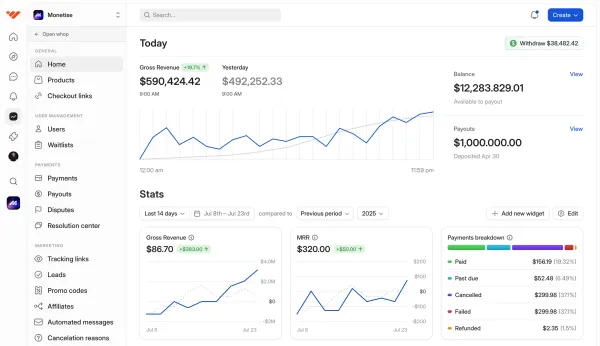
![How to sell digital products without a website - ultimate guide [2026]](/blog/content/images/size/w1000/2024/02/How-to-Sell-Digital-Products.webp)

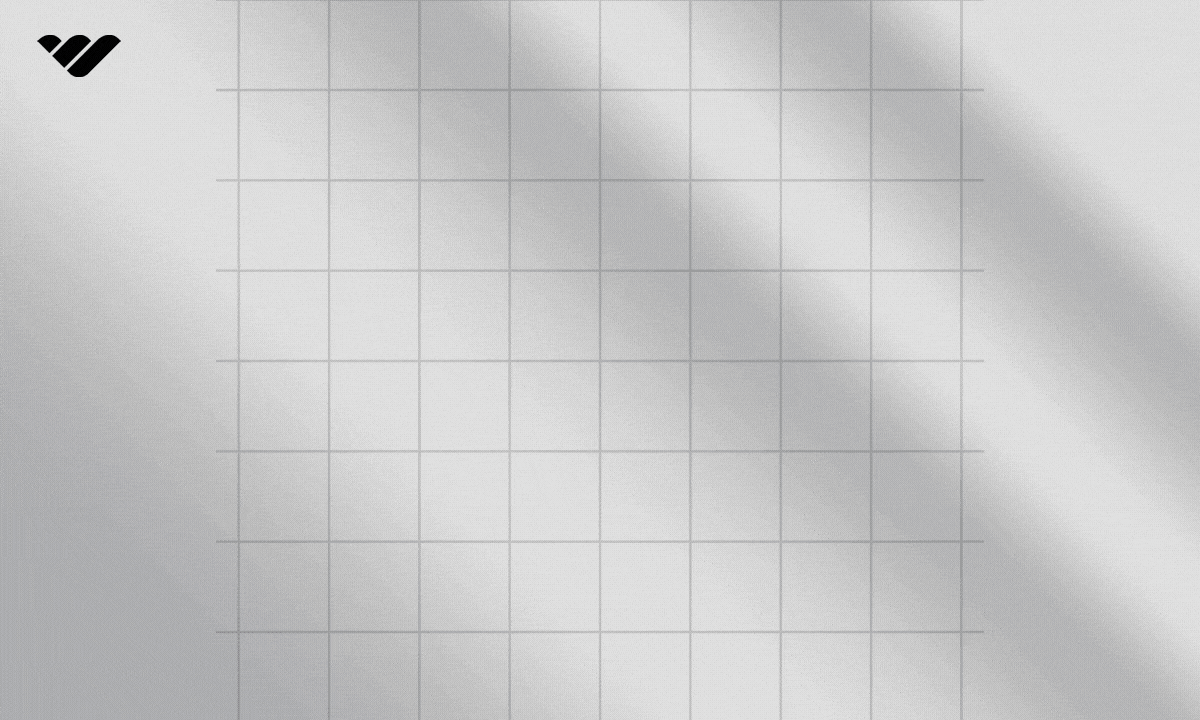
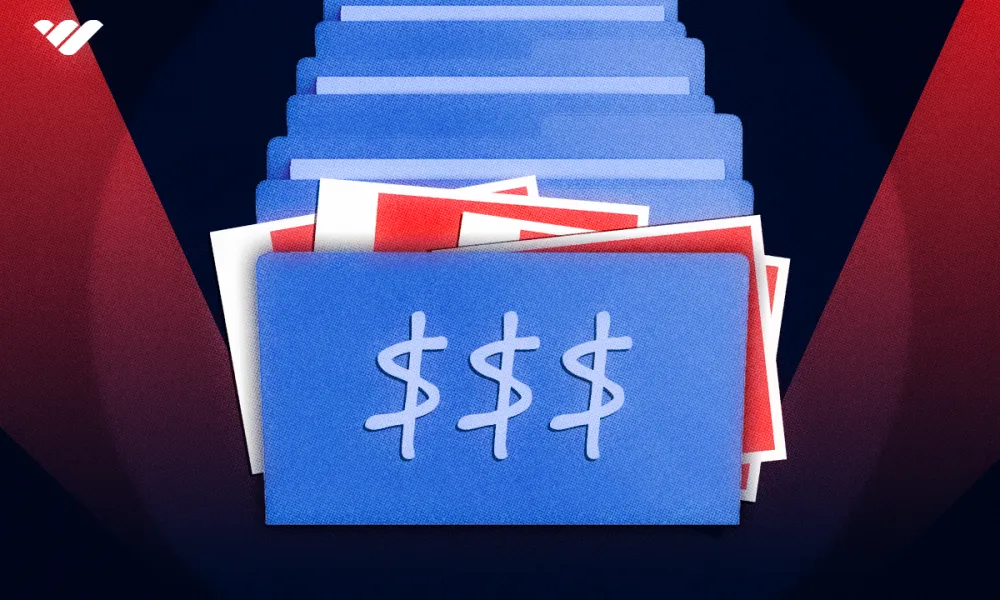
![Where to sell digital products [2026]](/blog/content/images/size/w1000/2023/11/Where-To-Sell-Digital-Products.webp)

